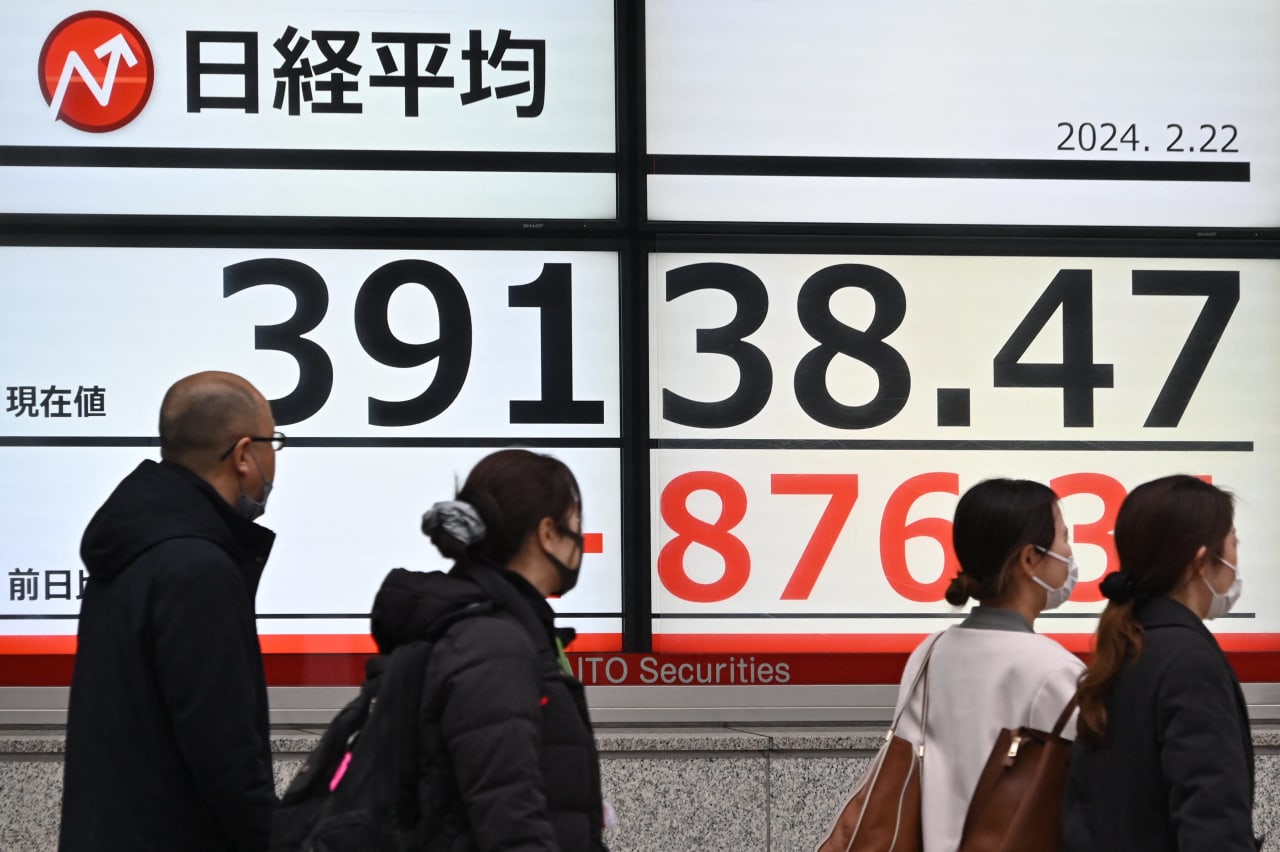The Nikkei 225 – a strangely constructed index covering the 225 major Japanese companies – has returned to levels not seen since 1989.
The Nikkei 225 JP:NIK rallied 2.2% on Thursday to close at 39,098.68, surpassing its December 1989 peak of 38,916.
“While the most recent push to these levels has been rapid, we do not view it as a mountaineering ascent to a peak where the next phase is how to manage the descent,” said Morgan Stanley strategists led by Jonathan Garner, who in 1989 wrote down Eurobond closing prices from London and faxed them to Tokyo.
Morgan Stanley analysts noted that the First Section-based group of companies’ profits increased 20% year-on-year. Data from Societe Generale meanwhile shows that Japan is the only country where earnings per share estimates for this year and next are actually rising.
This is impressive considering there is no clear driver for profit growth like the AI that has underpinned the likes of Nvidia NVDA,
and Super Micro Computer SMCI,
And, strangely, many of Berkshire Hathaway’s holdings, including Mitsubishi 8058,
Mitsui 8031,
Marubeni 8002,
and Sumitomo 8053,
– all of which have been stellar investments for the company led by Warren Buffett – represent the biggest drag on Japanese profits.
Japan has pushed companies to adopt corporate governance reforms, which have led to stock buybacks at record levels, while the country’s central bank is considering exiting its negative interest rate regime amid the signals that it may escape deflation.
Analysts note that the Nikkei, like the Dow Jones Industrial Average, is a price-weighted stock index, which produces some unusual results. The largest weight in the index, Fast Retailing 9983,
it is actually the seventh largest company by market capitalization; the largest company, Toyota Motor TM,
it is number 15 in the Nikkei by weight.
The more broadly built and one might say normal Topix JP:180460 is still about 8% from its peak. US-based investors would have been better off staying home over the past 52 weeks, with the S&P 500 SPX up 24%, compared to a still impressive 20% gain for the iShares MSCI Japan ETF EWJ..
Of course there are risks.
Japanese companies, which have adapted to a weak domestic economy, are heavily exposed to both the United States – not an issue right now – and China, which is grappling with a debt glut similar to Japan’s . There is also the yen USDJPY,
which could increase in value if the Bank of Japan raises interest rates, making Japanese exporters less competitive.
